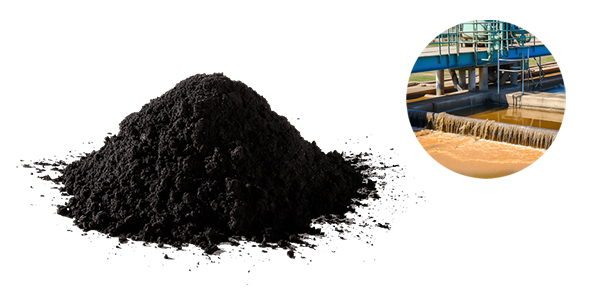The blog will introduce the dangers of sulfate, and the removal methods of sulfate, as well as specialize activated carbon for sulfate purification.
Hazards of sulfate wastewater
Sulfate wastewater mainly refers to wastewater containing sulfate ions, among which the more common ones are sodium sulfate, ammonium sulfate, etc. The main hazards of sulfate wastewater are as follows:
Direct pollution to water bodies
The sulfate ions in sulfate wastewater will reduce the pH value of the water body, destroy the acid-base balance, and cause poisoning to aquatic organisms.Pollution to the atmospheric environment
The sulfate in sulfate wastewater will be released into the atmosphere through evaporation and other methods, forming acid rain, causing pollution to the atmospheric environment.Pollution of soil
The sulfate in sulfate wastewater will penetrate into the soil and cause damage to the structure and fertility of the soil.Sulfate wastewater treatment process
In order to effectively treat sulfate wastewater, the current commonly used treatment processes mainly include the following:Coagulation and precipitation method
In this method, by adding an appropriate amount of coagulant, the sulfate ions in the wastewater react with the coagulant to form precipitate, and then the sulfate ions in the wastewater are removed through processes such as precipitation and filtration.Ion exchange method
This method uses ion exchange resin to adsorb and exchange sulfate ions in wastewater, remove sulfate ions in wastewater, and at the same time regenerate and reuse wastewater.Activated carbon adsorption method
This method uses activated carbon to adsorb sulfate ions in wastewater, and removes sulfate ions in wastewater through physical adsorption.Membrane separation method
This method uses membrane technology to separate wastewater. Through the selective permeability of the membrane, the sulfate ions in the wastewater are separated to achieve the purpose of removing sulfate.
Activated carbon for sulfate
Activated carbon is a highly porous material with a large surface area, making it an excellent adsorbent for a variety of pollutants. Its unique structure allows it to attract and retain a variety of contaminants, including sulfates, through an adsorption process. It makes activated carbon a versatile and efficient tool for treating mine water, where sulfate removal is critical for environmental protection.Activated carbon working principle
The adsorption of sulfate on activated carbon is mainly driven by electrostatic forces and chemical interactions between the carbon surface and sulfate ions. The porous structure of activated carbon provides many attachment sites for sulfate ions, effectively capturing them from water. This mechanism can significantly reduce the sulfate concentration in the treated water, thereby promoting environmental sustainability.Advantages of activated carbon treatment
Selective adsorption:
Activated carbon has a high affinity for sulfate and can selectively remove sulfate without affecting other essential ions present in mine water. This selectivity is critical to maintaining water quality and preventing beneficial minerals from being removed.
Renewability:
One of the main advantages of activated carbon is its reproducibility. Once saturated, activated carbon can be regenerated through a thermal or chemical process, extending its service life and making it a cost-effective and sustainable solution for long-term sulfate removal.
Versatility:
Activated carbon can be adapted to the characteristics of specific mine water by adjusting its pore size, surface chemistry and activation method. This adaptability ensures optimal performance under different conditions, making it suitable for use in a variety of mining environments.
Reduce environmental impact:
By effectively removing sulfate from mine water, activated carbon treatment helps reduce the environmental impact associated with the discharge of sulfate-rich wastewater. This helps protect aquatic ecosystems and prevents the formation of acid mine drainage.

